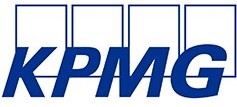What I’m reading – Kevin Jenkins
Disruption, the rise of social media and some governance horror stories feature in this week's must-read.

During 2020 and 2021, people across the globe discovered the joys and challenges of working remotely. The entrenched expectation of rigid in-person office hours crumbled, leaving both employers and workers trying to figure out how to move ahead once lockdowns ended.
Global expectations about the way we work have changed, but not in a consistent direction. The priorities of businesses and individuals are often at odds, and how much a person wants to (or indeed is able to) work from home will depend on their living situation, type of work and personality.
So how can Kiwi businesses strike the right balance to achieve the best of both worlds? This is the question we’ve been exploring, and we’ve released a playbook for successful hybrid workplaces in New Zealand.
Shifting from hybrid-by-crisis to hybrid-by-design requires some careful consideration. Being truly hybrid is more than just sometimes working from a home that is a short drive from your office. It could mean working from a customer’s premises, it may mean working from a different town or even a different country.
In the same way that hybrid works differently for different people, it works differently for different types of roles. An office worker with a desk-based role could work from a shared workspace. A customer service agent could serve customers on video chat from their home. A building foreman could be onsite four days a week and spend one day a week at home completing paperwork. So while many roles could include an element of hybrid working, the same approach won’t work for everyone.
Getting it right means balancing organisational goals with people preferences, so you can tailor an approach that fits your organisation and culture. The first step is to get the foundations right, so your whole team can align their goals and expectations. This builds a culture of trust, which underpins all successful flexible work arrangements.
Starting with these seven foundations will help any organisation create a successful and sustainable hybrid work model:
New Zealand is unique in that we don’t have the ease of access to talent that some larger markets do. We don’t attract people looking for super-sized salaries or the chance to manage thousands of people. Instead, it’s our lifestyle that appeals – from our natural landscapes, to our fresh air and outdoor activities, to our relaxed attitudes.
If we could lead the way in hybrid working, this would be another lifestyle drawcard for top talent from across the globe. The pandemic changed the way many people feel about their work; they want a job that allows time for their hobbies and families. With a reputation for offering successful hybrid working policies, Aotearoa could be the destination of choice for brilliant minds who also want a balanced lifestyle.
Done well, this is a way of working that could drive greater success and productivity for individuals, businesses, and the prosperity of the New Zealand economy.
